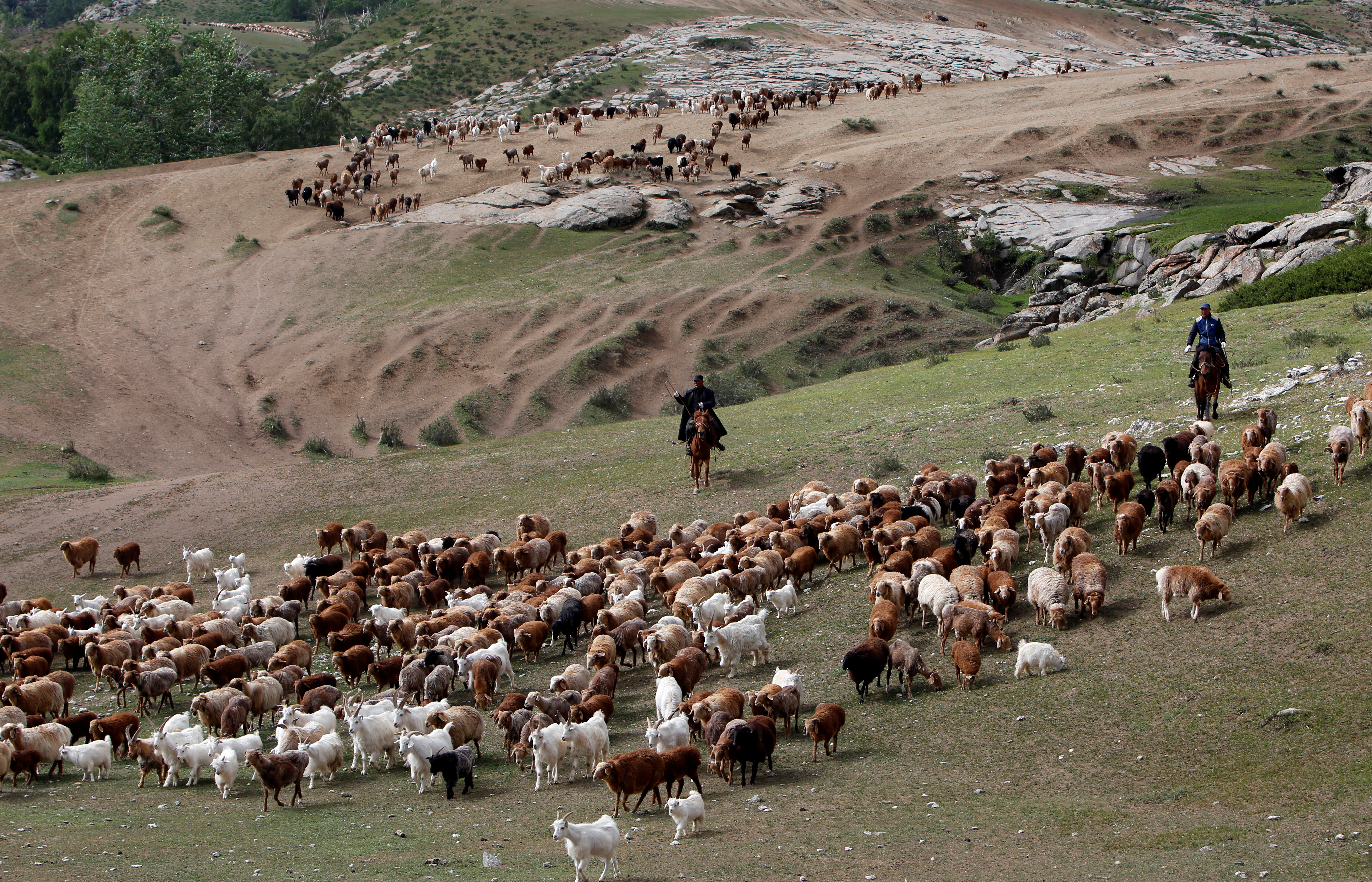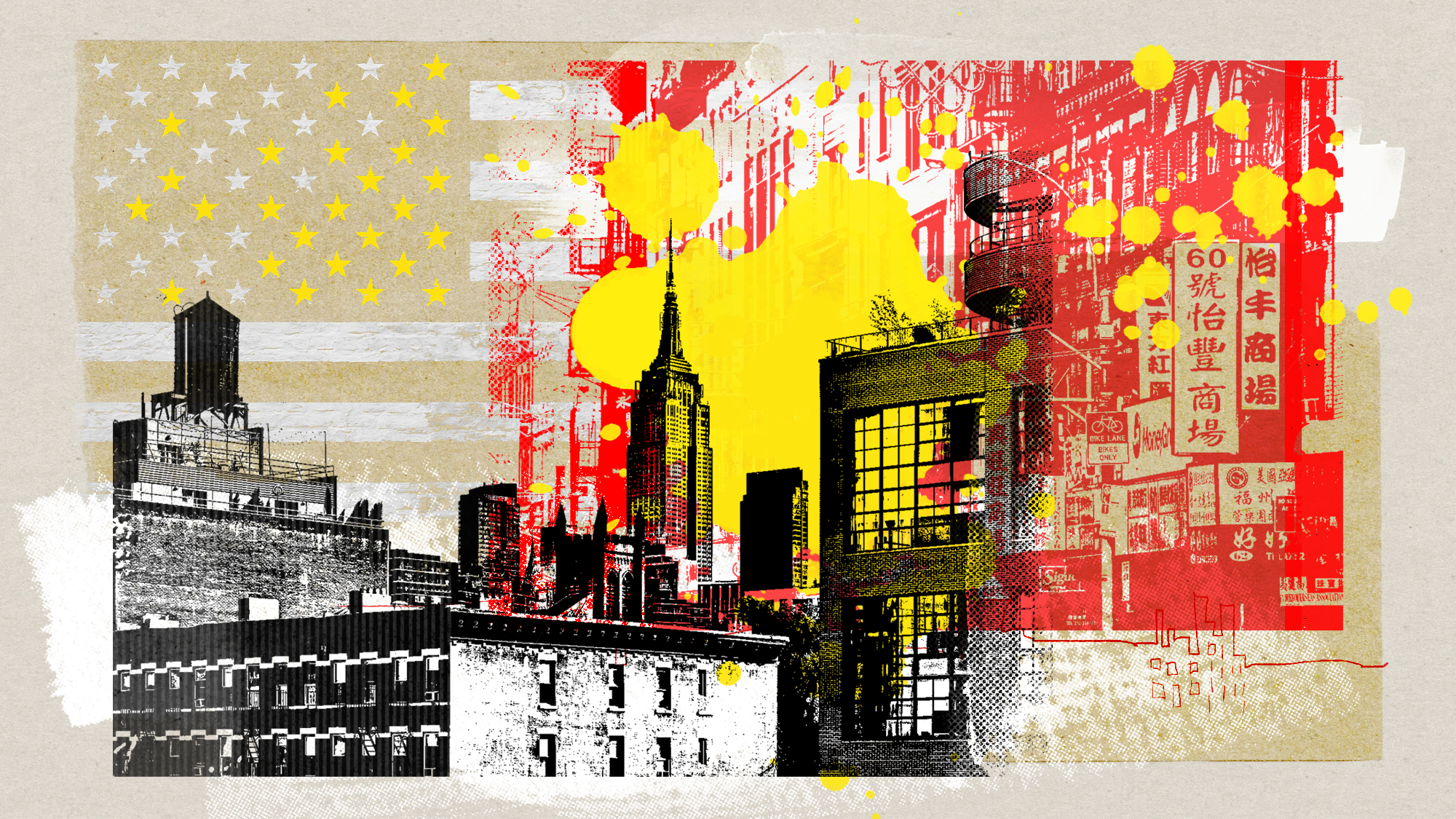China's Wild West
Go west, young Han

Mining boom towns, violent clashes with indigenous peoples, prospectors pushing into foreign lands — welcome to China's Wild West!
As the country continues to develop, a distinctly Chinese version of the United States' westward expansion in the 19th century is taking shape. While 19th-century America was obsessed with Manifest Destiny — the idea that predominantly white Americans would conquer all the land from the East Coast to the West — the People's Republic has its own obsession: the Chinese Dream. A kind of unifying nationalism promoted by Chinese President Xi Jinping, the Chinese Dream is the belief that the entire country — urban and rural alike — must become well-off, socially harmonious, and fully developed by 2049.
Driven by this dream to modernize the entire country — as well as by its insatiable demand for natural resources — China is taking a page from Uncle Sam's old playbook and using settlers, prospectors, and railroads to conquer its restive borderlands.
The Week
Escape your echo chamber. Get the facts behind the news, plus analysis from multiple perspectives.

Sign up for The Week's Free Newsletters
From our morning news briefing to a weekly Good News Newsletter, get the best of The Week delivered directly to your inbox.
From our morning news briefing to a weekly Good News Newsletter, get the best of The Week delivered directly to your inbox.
Go west, young Han
With a population of over 1.4 billion, China is fueling this expansion with its most plentiful resource: people. Using economic incentives and massive infrastructure spending as bait, Beijing has lured millions of Han Chinese migrants and businesses to the country's most far-flung provinces. This has created predictable tensions with local ethnic minorities.
Take Xinjiang, which lies in the far western reaches of China and means "new frontier" in Mandarin.
Rich in natural resources, Xinjiang has coal deposits that account for roughly 40 percent of China's total and is home to the country's largest natural gas reserves. Beijing has invested billions of dollars to extract these resources, enticing hundreds of thousands of Han Chinese to the region, the traditional home of the nation's Uighurs, a Turkic ethnic group that practices Islam. It is reported that 250,000 to 300,000 Han Chinese migrate to Xinjiang each year seeking opportunities, and Uighurs now only make up 46 percent of the region's population.
A free daily email with the biggest news stories of the day – and the best features from TheWeek.com
A similar dynamic can be observed in Inner Mongolia, where a mining boom has fueled rapid Han Chinese migration. The area accounts for only 12 percent of China's land, but is responsible for one quarter of all of China's coal production and is the main global supplier of rare earth metals.
For centuries, Mongolians have populated the plains of Inner Mongolia, but over the course of two generations, Chinese settlement has rendered Mongolians a shrinking minority in their own homeland. Han Chinese now account for roughly 80 percent of the province's 24 million residents.
In both these regions, the sharp influx of Han Chinese has led to increasing resentment from locals who have largely been excluded from jobs and other economic gains. Simmering tensions have boiled over into violent ethnic riots that have left scores dead in Xinjiang and Inner Mongolia.
China's response has been to double down on infrastructure spending in the hopes of luring even greater numbers of Han Chinese and to issue harsh policies aimed at integrating locals. In Xinjiang, beards and veils, worn by Muslim Uighurs, have been banned; in Inner Mongolia, herders have been rounded up and forced to abandon their nomadic ways and live in towns.
All has been officially enacted under the guise of creating the Chinese Dream's rich and harmonious society, but, as in the old American West, the benefits only seem to go to the settlers from the East.
The golden spike
Just as railroads helped speed industrialization and the spread of settlers in 19th-century America, population booms in China's frontiers have been facilitated by a steep rise in railroad spending.
For instance, Beijing recently announced plans to spend over $81 billion to improve transportation in Tibet, which like Xinjiang has been roiled by clashes between the native ethnic minority and Han transplants. That spending will go towards buttressing some already remarkable infrastructure. Soaring at 16,640 feet above sea level is the world's highest railway, the Qinzang line, which links China's Qinghai Province to Tibet's capital, Lhasa. An estimated 3,000 Han Chinese already travel by high-speed trains to Lhasa each day, and more are expected as Beijing completes additional lines.
This has helped China inundate parts of Tibet with Han workers. While Tibetans still make up over 90 percent of the region's population, its capital has seen a steady increase in Han Chinese, from 17 percent of the city's population in 2000 to 22 percent last year. Thanks to China's railways, that share is only expected to grow.
There's natural gas in them thar hills
Like American prospectors heading into the Yukon to search for gold, Han Chinese have also ventured beyond their nation's borders to search for natural resources.
On China's western edge, businesses have used Xinjiang as a spring board into Central Asia. Chinese companies now control nearly a quarter of Kazakhstan's oil industry and more than half of Turkmenistan's gas exports. China also operates gold mines in Kyrgyzstan, mines for rare earth metals in Tajikistan, and rail lines and gas pipelines snake from China into Central Asia.
While Chinese investment has been welcomed by governments, locals have mixed feelings. In Kyrgyzstan local workers complain that they are paid less than Chinese laborers, and Chinese merchants, subsidized by their government, have driven local merchants out of business by flooding bazaars with cheaper Chinese goods.
And then there's the Russian Far East.
The border between China and Russia is more than 2,000 miles long and very porous. On the Russian side, the workforce has rapidly shrunk due to mass migration and an aging population, while young Chinese — eager for jobs — are ready to fill the void. The population difference is now stark: There are 100 million Chinese on one side, and only four million Russians on the other.
Russia's Far East was once part of imperial China, but what makes it so attractive to the Chinese today is its abundant natural resources. The area holds almost all of Russia's diamonds, a third of its gold, and major oil, natural gas, and zinc deposits. This has spurred Chinese mining expeditions into Russian territory.
How many Chinese venture across the border each year is unknown, but Russian officials claimed in 2000 that 1.5 million did in a single 18-month span. While that's almost certainly a gross exaggeration, it does underscore Russia's growing unease with Chinese encroachment into the region. "China invests more in the Russian Far East than our own government does," Moscow newspaper Niezawisimaja Gazieta complained a few years ago. And it might be true — as Der Spiegel illustrates, Chinese businessmen dominate the markets in the Russian Far East, and many of its valuable resources are already being developed with the help of Chinese engineering and investment.
As China continues to develop its borderlands, tensions internally and externally are likely to grow. But at least on land — at sea is a different story — China's rise is unlikely to be marked by the bloody wars of America's expansionist past. The challenges that the People's Republic face are 21st century: how to tamp down the rising threat of terrorism, how to ensure that wealth is broadly shared, and how to create a harmonious society. And in that regard, China has more in common with 21st-century America than it likes to let on.
Eugene K. Chow is a speechwriter and freelance journalist. He is the former executive editor of Homeland Security NewsWire. Previously, he was a research assistant at the Center for A New American Security, a Washington-D.C. based think tank.
-
 Pakistan: Trump’s ‘favourite field marshal’ takes charge
Pakistan: Trump’s ‘favourite field marshal’ takes chargeIn the Spotlight Asim Munir’s control over all three branches of Pakistan’s military gives him ‘sweeping powers’ – and almost unlimited freedom to use them
-
 Codeword: December 6, 2025
Codeword: December 6, 2025The daily codeword puzzle from The Week
-
 Sudoku hard: December 6, 2025
Sudoku hard: December 6, 2025The daily hard sudoku puzzle from The Week
-
 Femicide: Italy’s newest crime
Femicide: Italy’s newest crimeThe Explainer Landmark law to criminalise murder of a woman as an ‘act of hatred’ or ‘subjugation’ but critics say Italy is still deeply patriarchal
-
 Brazil’s Bolsonaro behind bars after appeals run out
Brazil’s Bolsonaro behind bars after appeals run outSpeed Read He will serve 27 years in prison
-
 Americans traveling abroad face renewed criticism in the Trump era
Americans traveling abroad face renewed criticism in the Trump eraThe Explainer Some of Trump’s behavior has Americans being questioned
-
 Nigeria confused by Trump invasion threat
Nigeria confused by Trump invasion threatSpeed Read Trump has claimed the country is persecuting Christians
-
 Sanae Takaichi: Japan’s Iron Lady set to be the country’s first woman prime minister
Sanae Takaichi: Japan’s Iron Lady set to be the country’s first woman prime ministerIn the Spotlight Takaichi is a member of Japan’s conservative, nationalist Liberal Democratic Party
-
 Russia is ‘helping China’ prepare for an invasion of Taiwan
Russia is ‘helping China’ prepare for an invasion of TaiwanIn the Spotlight Russia is reportedly allowing China access to military training
-
 Interpol arrests hundreds in Africa-wide sextortion crackdown
Interpol arrests hundreds in Africa-wide sextortion crackdownIN THE SPOTLIGHT A series of stings disrupts major cybercrime operations as law enforcement estimates millions in losses from schemes designed to prey on lonely users
-
 China is silently expanding its influence in American cities
China is silently expanding its influence in American citiesUnder the Radar New York City and San Francisco, among others, have reportedly been targeted